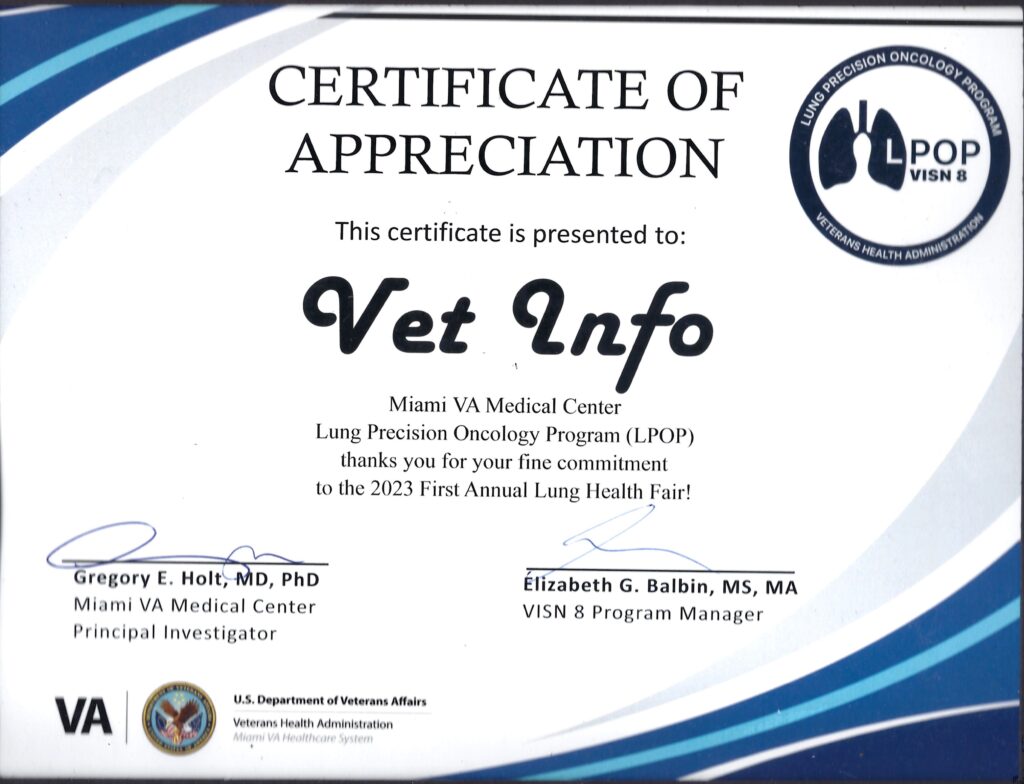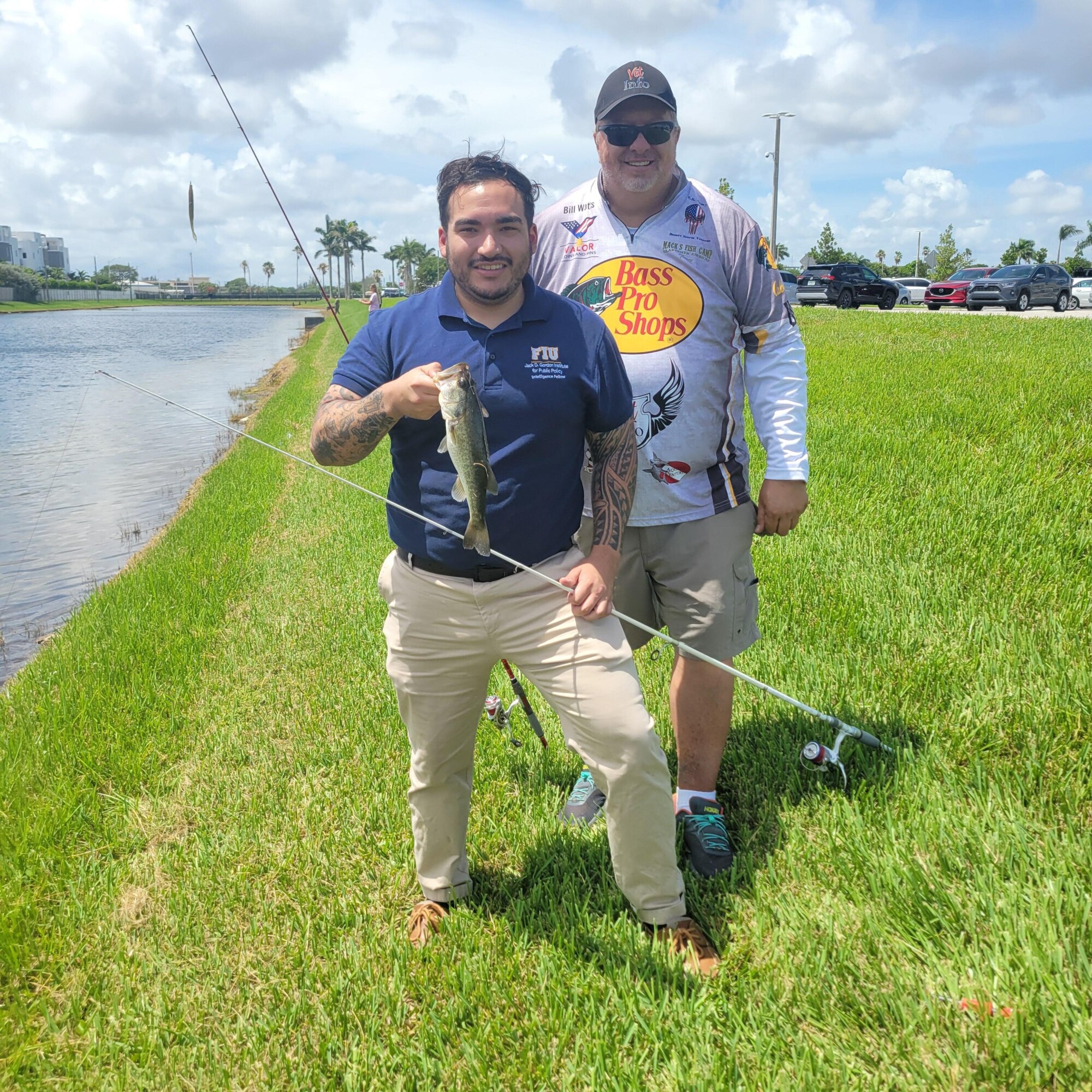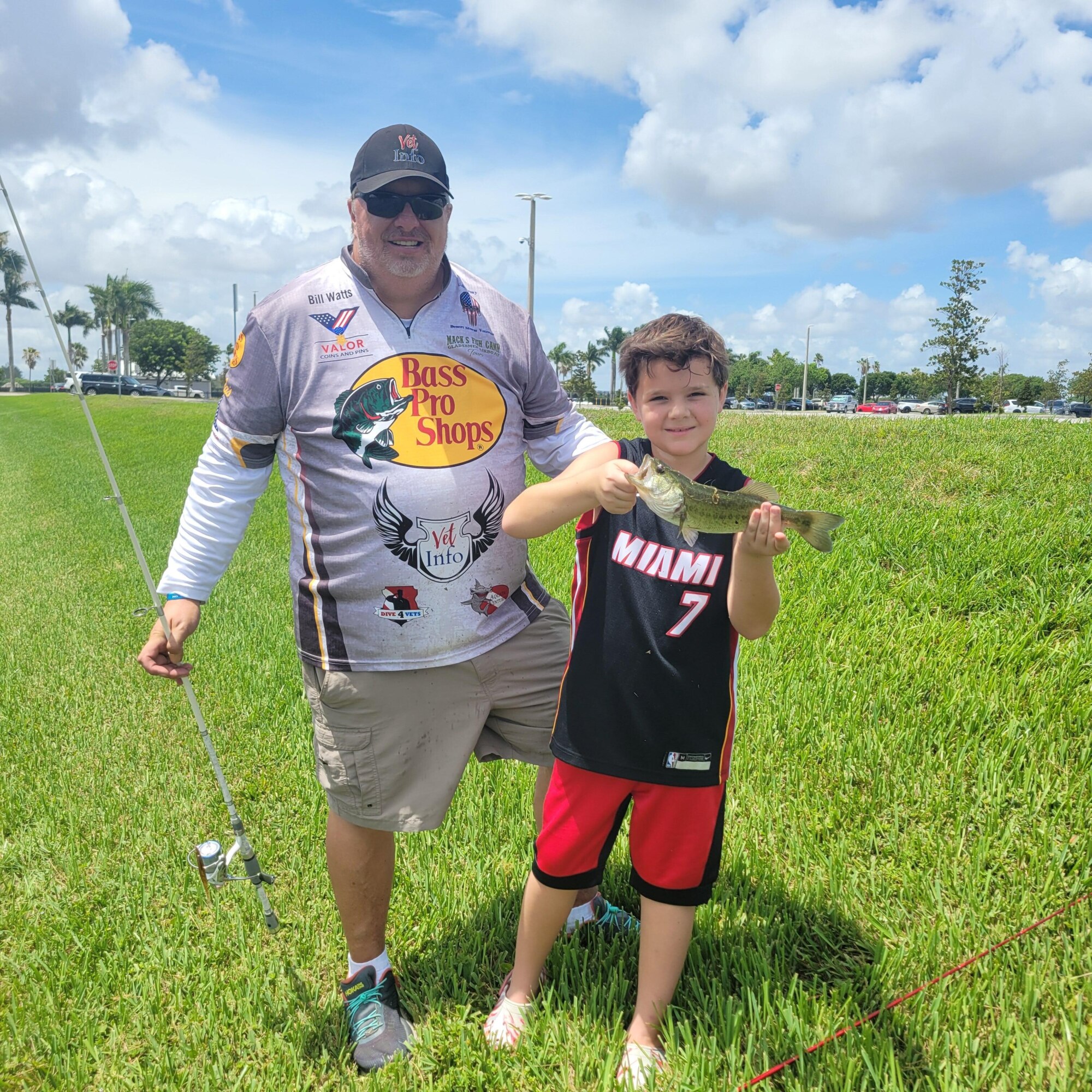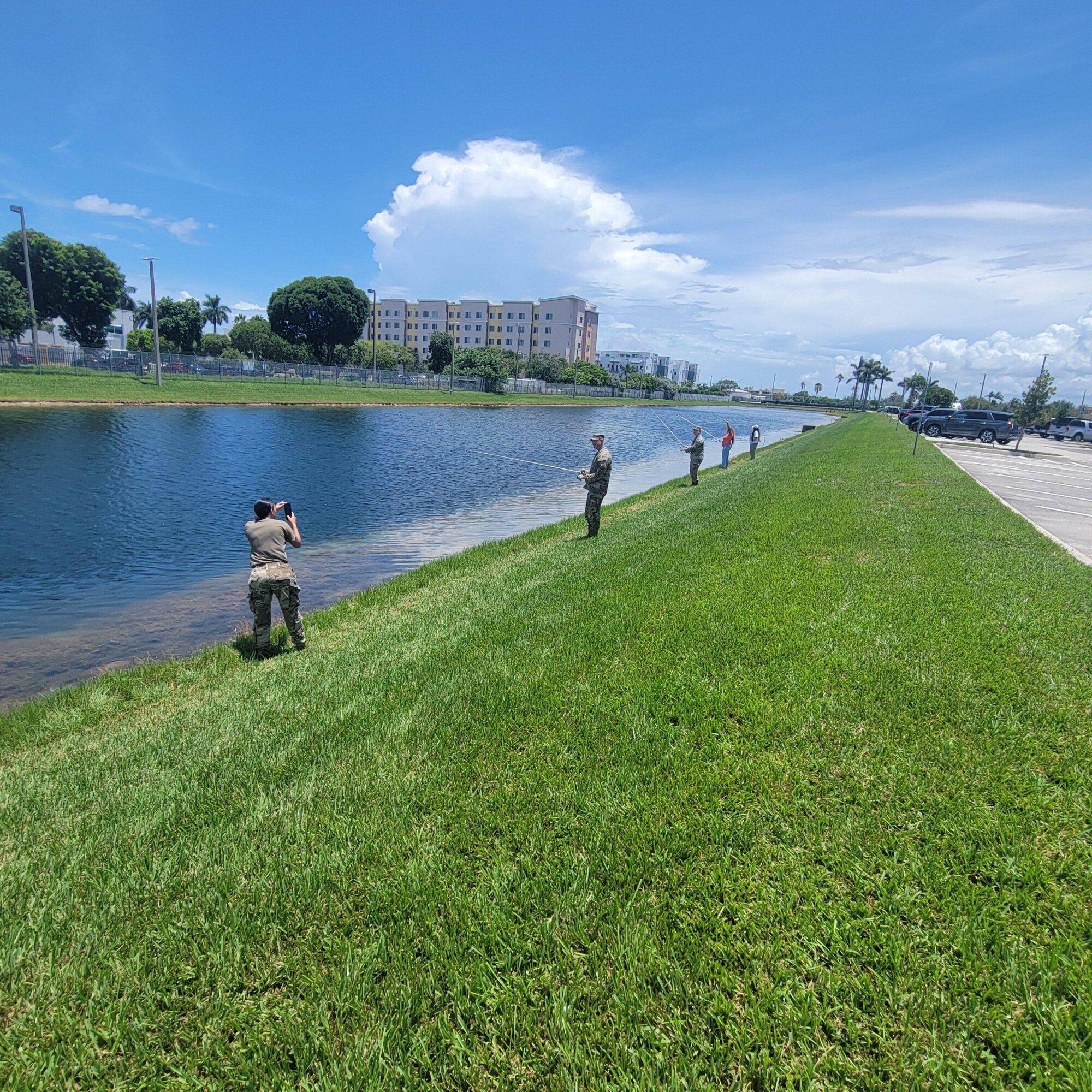![]() Come join us for our Monthly Fishing Friday Event for Active Duty and Veterans who work at Southern Command. Veterans who have access to the Facility are welcome to join.
Come join us for our Monthly Fishing Friday Event for Active Duty and Veterans who work at Southern Command. Veterans who have access to the Facility are welcome to join.
Tag: Veteran Outreach
Doral Military Veteran Breakfast
Working with Members of the community Vet Info comes together to help host this monthly breakfast. If you live in the area come out and join us.
Survivor Outreach Services Fall Newsletter
Events in Florida
No Veteran Left Behind – Veterans Day 2024
Mark Pinilla, Founder of Vet Info, spoke at Miami Dade College’s West Campus on Monday, November 4th, in honor of Veterans Day.
This day holds deep significance as a time to remember, reflect, and show respect for the countless men and women who have served and sacrificed for our nation. Veterans Day offers us a moment to recognize the bravery, commitment, and resilience of those who have dedicated themselves to protecting our freedoms and ensuring our country’s security. As a nation, it is essential that we express our gratitude—not only by saluting our veterans but by acknowledging the sacrifices they and their families have made. We extend heartfelt thanks to those who have paid tribute to their invaluable contributions.
No Veteran Left Behind
Vet Info Receives Certificate of Appreciation

Vet Info who is a strong supporter of health care in our Veterans receives a Certificate of Appreciation for the VISN 8 Lung Health Fair 2023. Our Founder William “Bill” Watts is the VISN 8 Veteran Advocate for the LPOP Team. He suffers from Toxic Exposures and was diagnosed with RADS after his participation in Desert Storm in 1991. ( RADS – Reactive Airways Dysfunction Syndrome ).
Fishing Friday at Southern Command
This will be the last Fishing Friday of 2024. Veterans who have access to the Garrison may attend this event. For Veterans and Active Duty who have access.
City of Doral Military Family Day 2024
Celebrate with the City of Doral and Vet Info Military Family Day 2024.
EventBrite Link – Military Family Day and Health Fair Tickets, Sat, Nov 16, 2024 at 11:00 AM | Eventbrite
Food
Lunch will be served ( Expecting Mission BBQ ) and Little Ceasars Pizza
Activities
Kayaking
Fishing
Kids Bounce Houses
Services
MWR from Southern Command
Miami VA Hospital will be providing Health Checks, Eligibility, Mental
Nova University Dental School
Vet Info
Concerned Veterans of America
Young Marines
VFW
FIU Veteran & Military Affairs/SVA
Mission Continues
Wounded Warrior Project
Miami Military Museum
Harley Davidson
Miami Vet Center
Miami VA LPOP
Walgreens
Quinones DDS
Mulitcare Community Services
Florida Fish and Wildlife
Miami Dade Parks / ECO Adventures
United Martial Arts
Pets for Vets – Free Pet Adoption
Publix
Veterans Day in the City of Doral
Join Vet Info and the City of Doral for Veterans Day at the Doral Veterans Park.
Artwork pending. Time subject to change
Fishing Friday at U.S. Southern Command
As part of Vet Info Cast off 22 Program we work with the Veterans and Active Duty at Southern Command once a month.
Fishing Friday July 2024 at U.S. Southern Command
As part of the Vet Info program Cast Off 22 ( Fishing Friday ) which we hold the third Friday of each month at U.S. Southern Command to provide a few hours of stress relief. During this event we have Veterans, Active-Duty and family members come out to enjoy the day with Vet Info Volunteers and Bass Pro – Pro Staff Capt. Bill Watts. We want to thank those support of Vet Info and we look forward to a great continued partnership/sponsorship of our Veteran focused program. .
Event – Fishing Friday
Location – U.S. Southern Command – Doral Florida
Participants – Veterans, Active Duty and family members
Largest fish this event – 5.29 lbs. – picture 1000022125
Sponsors – Vet Info Volunteer Director Isabel Pinilla / Bass Pro Shops Capt. Bill Watts / Headquarters Toyota / U.S. Southern Command / U.S. Southern Command Garrison
Equipment – All rods and reels are Bass Pro Shops brands – Carbonlite combo, Stampede, Tourn. Special
Bill
Pro Staff Bass Pro Shops – Miami



































